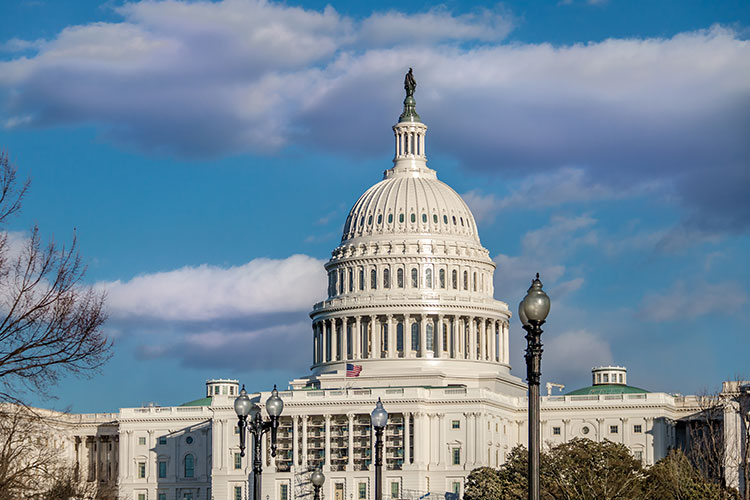Author Recent Posts Syeda Kulsum Zafar Latest posts by Syeda Kulsum Zafar (see all) Implications of Trump’s assertive policies on global economy and Trade – February 25, 2025 Repatriation of Afghan Refugees: Implications on Pakistan and Afghanistan trade ties – February 25, 2025 Role of International actors: Who is responsible for devastated GAZA? – February
The recent US claim that Pakistan’s missile program poses a threat to American soil seems misplaced, as Pakistan’s missiles are primarily intended for regional deterrence, not long-range aggression, revealing the underlying geopolitical motivations behind these accusations. Pakistan’s missile program is necessitated by regional security threats, particularly India’s military superiority and nuclear capabilities. The US sanctions are an unjustified interference in Pakistan’s rights to self-defense and part of a broader geopolitical strategy to counter China’s influence in the region and strengthen its alliance with India.
Pakistan has adopted an eastward defense strategy since its inception to counter the security concerns emanating from its arch-rival neighbor, India, and to balance the latter’s military superiority in South Asia because India has acquired the most sophisticated military arsenals. India’s indigenous production of Intercontinental Ballistic Missile, Agni-V, with a 5000 km range and acquisition of a second-strike capacity with the launch of its nuclear-powered submarine, INS Arihant, have further discomfited and compelled Pakistan to enhance its strategic military capabilities. This development disrupted the balance of power in the South Asian region and posed a significant threat to Pakistan. It has remained resolute in its pursuit of nuclear weapons despite the stringent economic measures imposed by the US in the past and will continue to do so in the future as well. It can be argued that the current US sanctions, therefore, will not impede Pakistan’s pursuit of a long-range ballistic missile if it is indeed working on it for its survival.
The US sanctions are the manifestation of a broader international power struggle in the South Asian region, where China and the US are competing for global dominance. Pakistan’s strategic location as China’s key economic partner in South Asia has provided China with a crucial trade route to the rest of the world through the Gwadar port. However, China’s growing economic influence in Pakistan and beyond is unsettling the US. It is bolstering India’s military strength as a result to counterbalance China’s expansion, recognizing that Pakistan is unlikely to provide substantial support against China. Instead, the US has shifted its focus to India, seeing it as a viable counterweight to China’s growing power. This geopolitical dynamic underscores the complexities of international relations in the region, where economic interests, strategic alliances, and global ambitions intersect.
The US’s outright censure and sanctioning of Pakistan’s long-range ballistic missile program as a threat reflect its discriminatory approach in dealing with South Asian states. This is because some other states, such as India, are receiving advanced and complex military arsenals from the US. India’s weapons procurement from the US jumped from $6.2 billion to $3.4 billion in 2020. Meanwhile, India also imports weapons from Russia, France, and Israel, making it the biggest importer of weapons worldwide, leading to military asymmetries in the South Asian region. Over the past few years, the US has been supplying sophisticated technologies to India through agreements like the Basic Exchange and Cooperation Agreement (BECA) and the Communications Compatibility and Security Agreement (COMCASA). The countries have also collaborated on missile development, jointly producing systems under the Defense Technology and Trade Initiative (DTTI) and the US-India initiative on Critical and Emerging Technologies (iCET). Islamabad is concerned about the growing defense ties between the US and India and terms the US sanctions as unfair and biased, which is also weakening the US’s rhetoric of being an advocate of non-proliferation.
The time period of the sanctions is very important as they were announced by the Biden government, which is nearing the end of its four-year presidential term. Obviously, the incumbent government lacks sufficient time to implement these sanctions. However, this development has created opportunities for the incoming Trump administration to either intensify sanctions against Pakistan or reject them and engage with Pakistan constructively. This is because President-elect Donald Trump’s inclinations seem to be towards more pressing challenges, such as an economic clampdown on China, potentially in the form of 60% tariffs. Time will reveal what is next for Pak-US relations during Donald J. Trump’s regime in terms of the implementation of these proposed sanctions.
The US’s concerns over Pakistan’s missile program are far more tied to its strategic alignment with India than to any real threat to American soil. By strengthening its ties with India, the US is seeking to counterbalance China’s growing presence in the Indo-Pacific region, often at Pakistan’s expense. However, Pakistan’s security is non-negotiable. In response, Pakistan must assert its right to self-defense while diversifying its international partnerships and advancing its defense strategy to reduce dependence on any single power. By navigating this complex geopolitical landscape with confidence and strategic foresight, Pakistan can safeguard its national interests and mitigate the impact of external pressures and double-dealing from the US and other blocs.
- Implications of Trump’s assertive policies on global economy and Trade - February 25, 2025
- Repatriation of Afghan Refugees: Implications on Pakistan and Afghanistan trade ties - February 25, 2025
- Role of International actors: Who is responsible for devastated GAZA? - February 25, 2025











Leave a Comment
Your email address will not be published. Required fields are marked with *